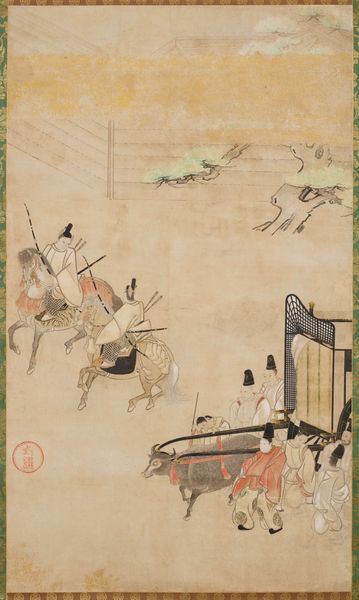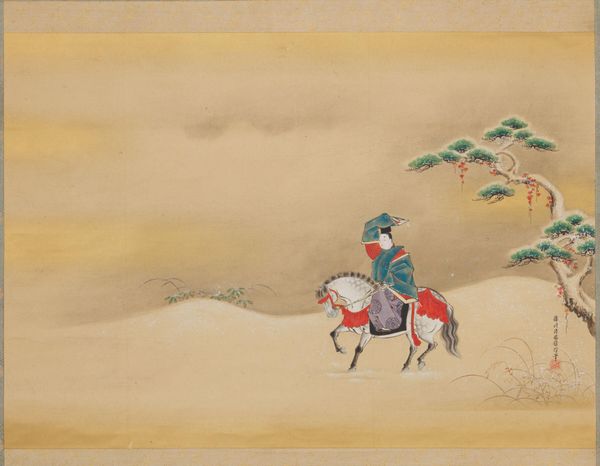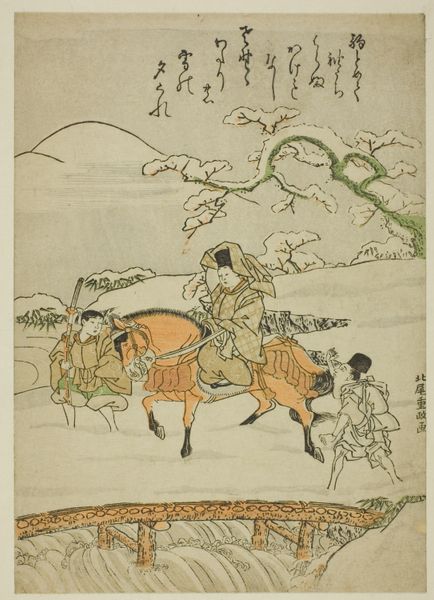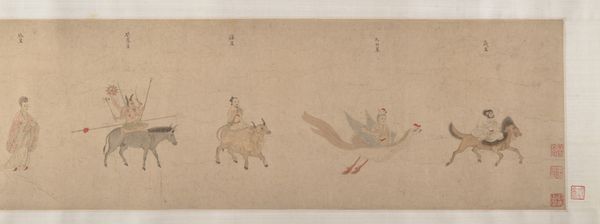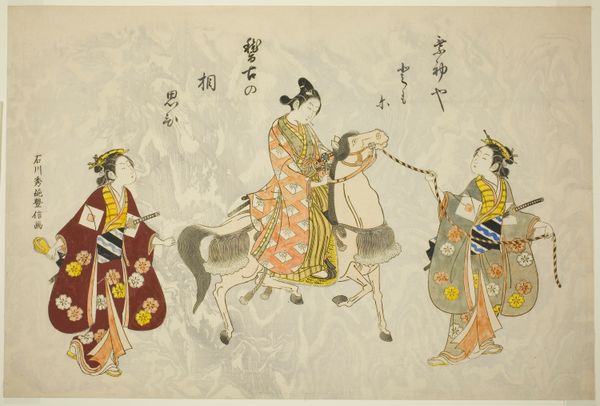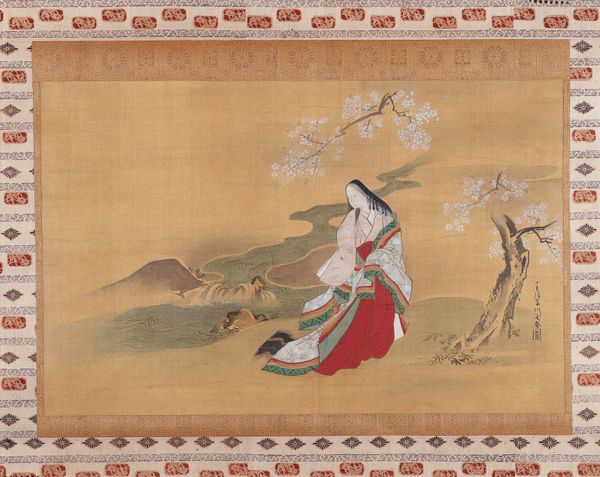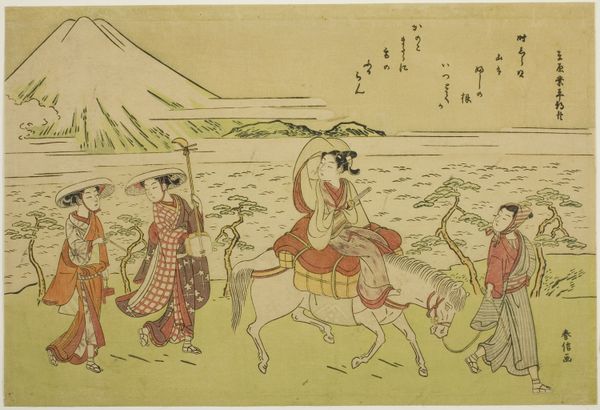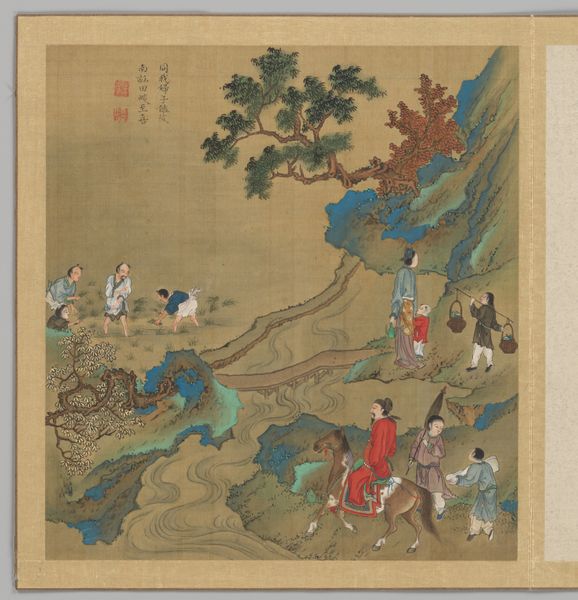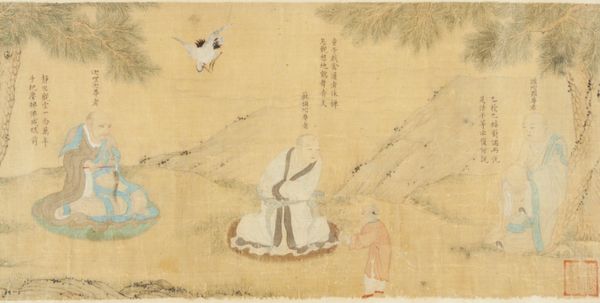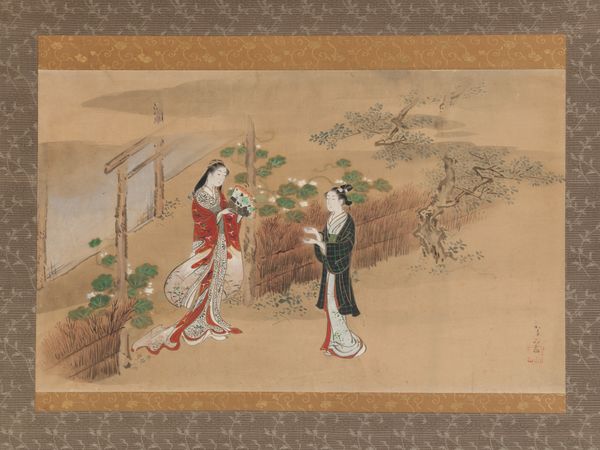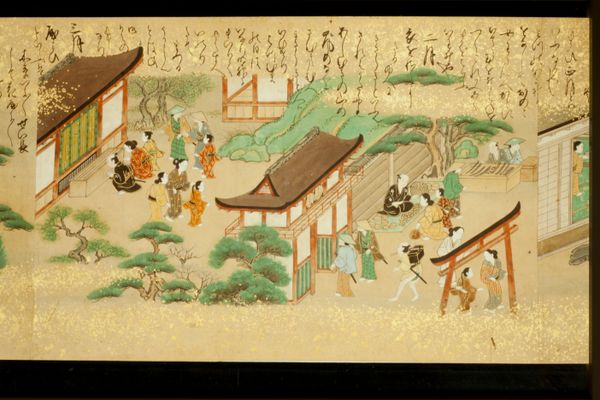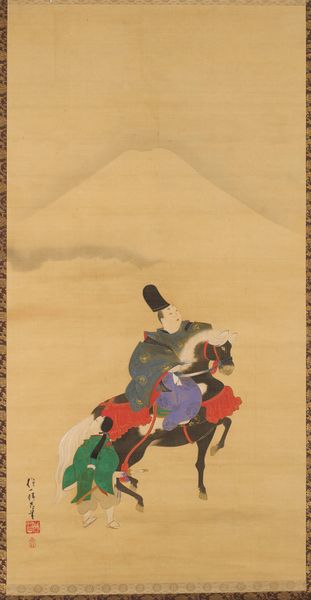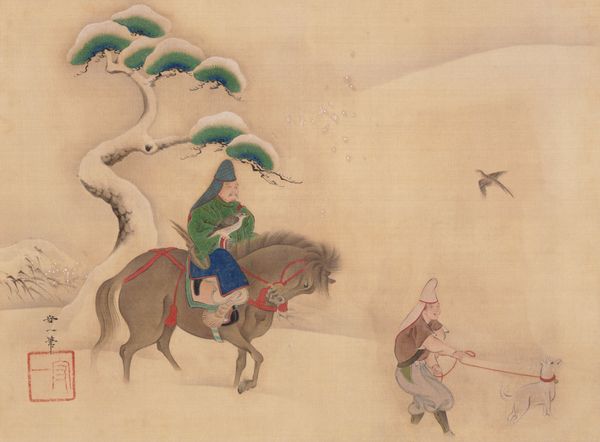
watercolor, ink
#
water colours
#
narrative-art
#
asian-art
#
oil painting
#
watercolor
#
ink
#
miniature
Dimensions: 30 1/2 × 18 1/2 in. (77.47 × 46.99 cm) (image, without roller)61 1/2 × 22 3/4 in. (156.21 × 57.79 cm) (mount)
Copyright: Public Domain
Editor: Here we have "Scene from Chapter 12," a mid-17th century miniature scroll attributed to Taketsugu. It's rendered in ink and watercolor, and it's a lovely example of narrative art from Japan. I find the open space intriguing, it gives it a real sense of depth. How do you interpret this work? Curator: The composition absolutely guides our eye, but I see much more than just a pleasing landscape. Consider the social context: who are these figures? Their attire and activities speak to rigid hierarchies. Note how the figure on horseback is attended to, the posture and garments denoting status and power. How does the imagery challenge or reinforce societal norms of the Edo period? Editor: So you’re saying that beyond the beautiful rendering, the painting provides us some insight into social stratification. Curator: Exactly. And consider the act of narrating a story through painting, like a chapter from a larger text as the title states. Who had access to these stories? How did the narrative reflect the values and power dynamics of the time? Even the delicate watercolor and ink speak to privilege and artistry. The very materials themselves held social weight. Do you think the size, as a miniature, also says something about who could have enjoyed the artwork? Editor: That's a great point; its size certainly means a very intimate relationship between the painting and its owner, almost like a secret world. I hadn’t considered the materials themselves as holding meaning! Curator: Art is never created in a vacuum; it's a product of its time. Reflecting, reinforcing, or challenging it, every brushstroke is an argument. Editor: I’m beginning to understand how crucial it is to look beyond just the aesthetic qualities. Considering the historical and social context opens up new layers of meaning and a deeper appreciation for art's role in society. Thank you! Curator: And thank you! Now, let’s look at another piece...
Comments
minneapolisinstituteofart almost 2 years ago
⋮
These three scrolls each illustrate a single scene from The Tale of Genji. The left scroll probably represents chapter 12, in which Genji is exiled to the desolate shore of Suma Bay. The center scroll illustrates a scene in chapter 28, in which the empress’s ladies-in-waiting carry cages with cicadas into the garden to give the insects a sip of morning dew. The right scroll may depict chapter 14, in which Prince Genji travels to Naniwa Bay in an ox-pulled carriage. These three scrolls were originally panels of a six-panel folding screen that was reformatted at some point. The three companion panels are in the collection of the Detroit Institute of Arts. Nothing is known about the artist, whose large round red seal reads simply “Taketsugu.”
Join the conversation
Join millions of artists and users on Artera today and experience the ultimate creative platform.
